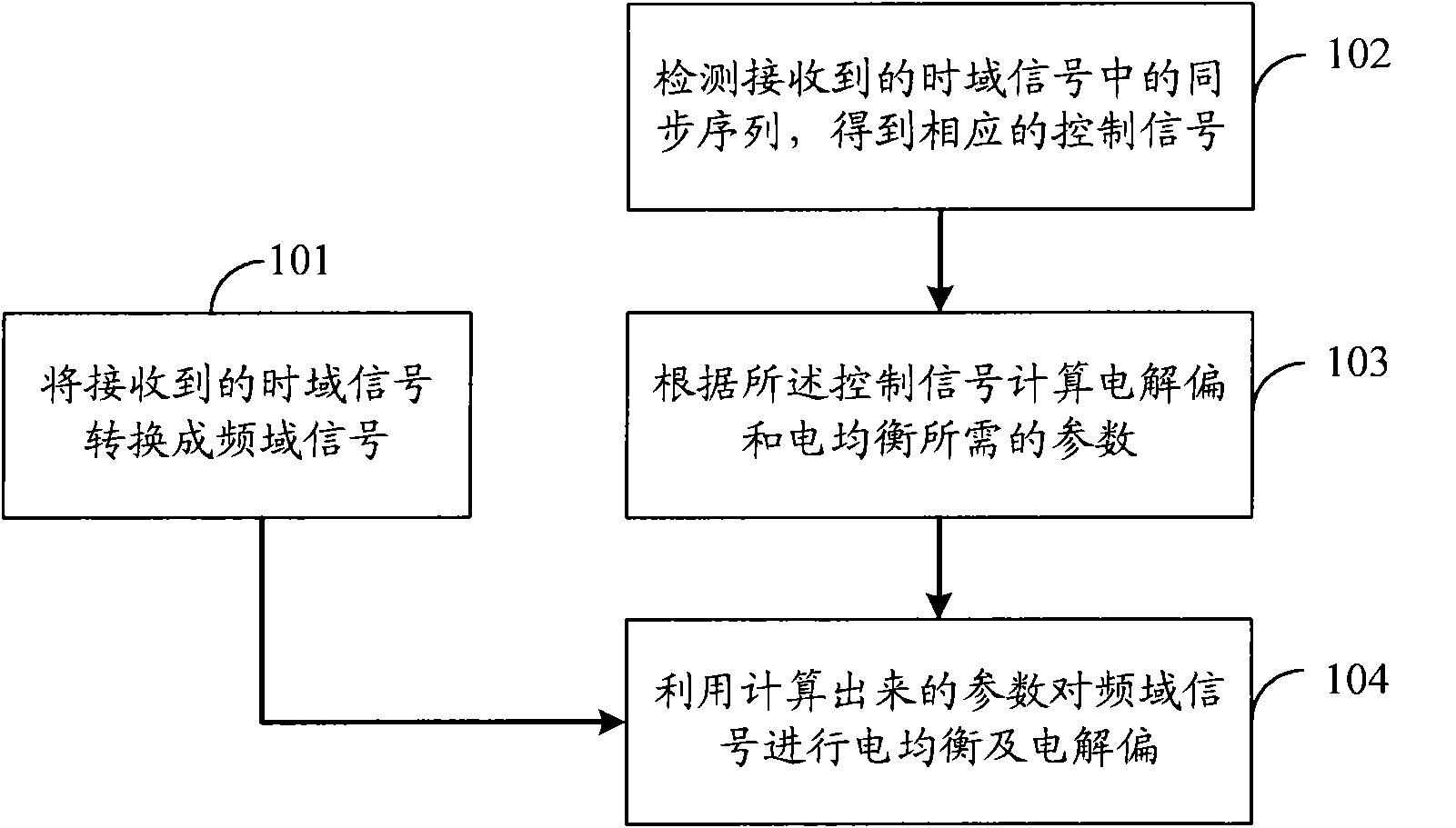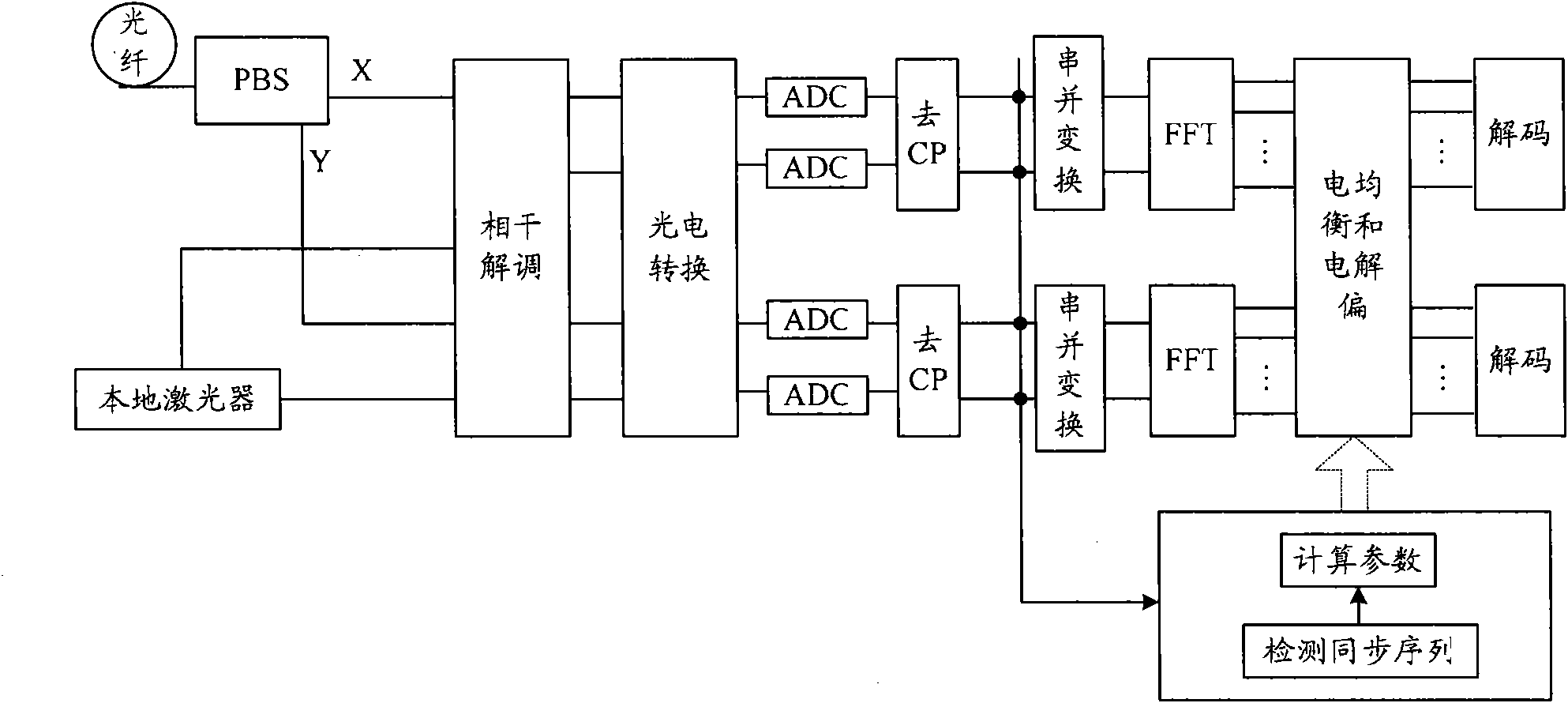Method for electrical equalization and electrical depolarization, receiving end device and communication system
一种电均衡、接收端的技术,应用在通信领域,达到复杂度降低的效果
- Summary
- Abstract
- Description
- Claims
- Application Information
AI Technical Summary
Problems solved by technology
Method used
Image
Examples
Embodiment 1
[0040] A method of electrical equalization and electrolytic bias, on the one hand, converts the received time-domain signal into a frequency-domain signal, on the other hand, detects the synchronization sequence in the received time-domain signal, and obtains the control corresponding to the detection situation signal, and then calculate the parameters required for electrical equalization and electrolytic bias according to the control signal, and finally use the parameters to perform electrical equalization and electrolytic bias on the converted frequency domain signal, that is, perform electrical equalization and electrolytic bias on the received signal in the frequency domain. Electrolytic bias. Among them, the received signal here generally refers to the time domain signal and the frequency domain signal. When the received signal is in the time domain, it is called the time domain signal. When the received signal is in the frequency domain, it is called the frequency domain ...
Embodiment 2
[0052] According to the method described in Embodiment 1, an example will be given below for further detailed description.
[0053] In order to better describe the embodiment of the present invention, figure 2 A schematic diagram of signal processing by a receiver device according to an embodiment of the present invention is given (it should be noted that, for ease of understanding, figure 2 The processing of other parts in the prior art is also given in ). The process is as follows:
[0054] The received optical signal is divided into two optical signals by a polarization beam splitter (PBS, Polarization Beam Splitter), and the two optical signals are converted into analog electrical signals through coherent demodulation and photoelectric conversion respectively. The two analog electrical signals pass through the analog / digital converter (ADC, Analog-to-Digital Converter, in figure 2 ADC) is sampled and quantized into a digital baseband signal, and the two digital signa...
Embodiment 3
[0099] In this embodiment, the equalizer, the depolarizer, and the detection of the synchronization sequence in the time domain signal are the same as in the second embodiment, but the parameters required for electrical equalization and electrolytic polarization are calculated in other ways. as follows:
[0100] (1) When the control signal indicates that the received time-domain signal is a synchronous sequence, that is, when the synchronous sequence is detected, an adaptive algorithm based on training is used to calculate the parameters required for electrical equalization and electrolytic bias.
[0101] The iterative formula of the training-based adaptive algorithm is the same as that of the decision-feedback adaptive algorithm, but the error calculation method is different. The synchronization sequence is known to both the sending end and the receiving end, assuming that the signal sent in the X polarization state is The signal sent by the Y polarization state is After ...
PUM
 Login to View More
Login to View More Abstract
Description
Claims
Application Information
 Login to View More
Login to View More - Generate Ideas
- Intellectual Property
- Life Sciences
- Materials
- Tech Scout
- Unparalleled Data Quality
- Higher Quality Content
- 60% Fewer Hallucinations
Browse by: Latest US Patents, China's latest patents, Technical Efficacy Thesaurus, Application Domain, Technology Topic, Popular Technical Reports.
© 2025 PatSnap. All rights reserved.Legal|Privacy policy|Modern Slavery Act Transparency Statement|Sitemap|About US| Contact US: help@patsnap.com



